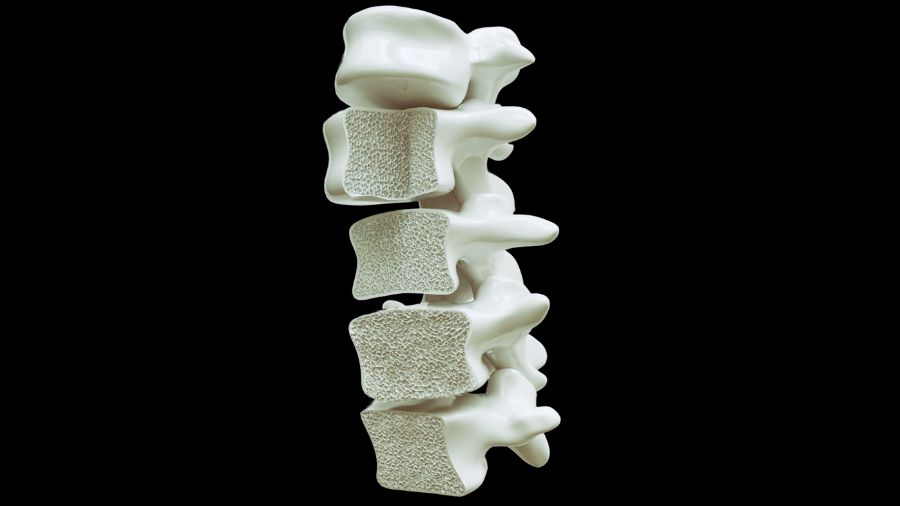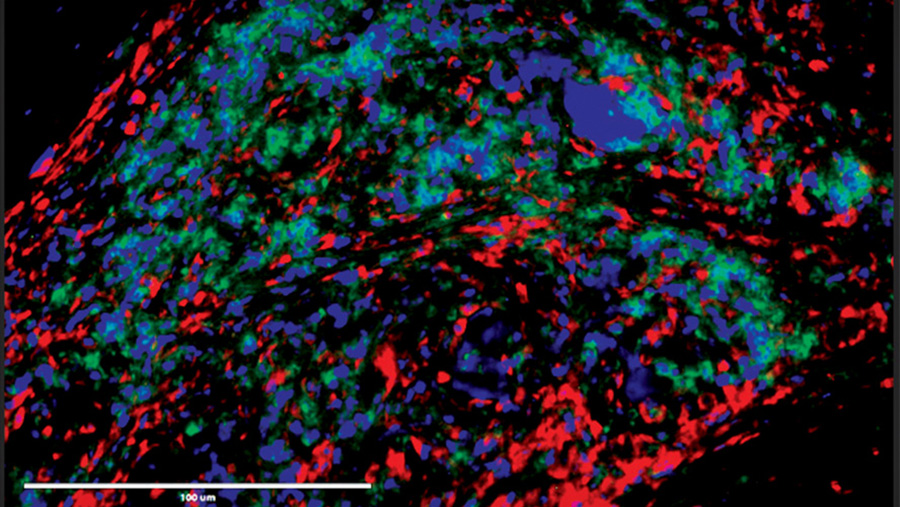A hallmark feature of axial spondyloarthritis is inflammation of the sacroiliac joint – the joint that connects the lower spine and the pelvis. This inflammation frequently results in severe back pain and stiffness. (Photo: iStock)
Researchers at the Schroeder Arthritis Institute at University Health Network have identified proteins that signal joint inflammation and may predict treatment outcomes in individuals with axial spondyloarthritis.
This form of arthritis mainly affects joints of the spine and pelvis. Although treatments exist to suppress disease flare-ups and reduce symptoms, there are few molecular markers that scientists and clinicians can use to accurately identify chronic inflammation or predict treatment success.
To improve management of the condition, the research team examined whether proteins in patients’ blood can be used to detect joint inflammation and predict how patients will respond to treatments.
“By identifying proteins in the blood that reflect disease status, we have the potential to address a major care gap for patients,” explains Dr. Robert Inman, senior author of the study and Co-Director and Senior Scientist at the Schroeder Arthritis Institute at UHN. “This information could be used to develop a simple blood test to measure disease flare-ups or gauge the effectiveness of treatments.
“The approach could also shed light on underlying disease mechanisms – leading the way to new therapies.”

The researchers monitored 286 individuals with the disease for between four years and 12 years, and measured blood levels of two proteins – the lipocalin 2 (LCN2) and oncostatin M (OSM).
The team focused on these proteins because previous studies from the Inman lab (examining an experimental model of axial spondyloarthritis) had implicated them in inflammation and bone remodelling, the hallmark features of the disease. They then examined the relationship between the levels of the two proteins and patients’ responses to treatment, as well as inflammation – determined by imaging of the sacroiliac joint near the hip.
The team found that most patients with the disease had higher levels of LCN2 and OSM than normal. Also, individuals who had high levels of these proteins over longer periods of time were more likely to have joint inflammation.
Patients with different protein levels responded differently to certain treatments, but persistent elevation of either protein was generally linked to poorer treatment outcomes.
Over the course of the study, back pain resolved in 60 per cent of patients. Despite their lack of pain, approximately half of these patients continued to have elevated levels of LCN2 or OSM. Interestingly, over 85 per cent of these patients also exhibited joint inflammation, indicating that protein levels might be more sensitive measures of disease activity than self-reported symptoms.
“This study has shed light on how LCN2 and OSM contribute to joint inflammation in this form of arthritis. Our hope is to advance the use of these proteins to better predict treatment outcomes,” says Dr. Inman. “Also, because these proteins appear to reflect disease activity better than pain severity, measuring protein levels could help us develop preventative and proactive treatment strategies to better manage the disease.”
This work was supported in part by donors to UHN Foundation.



